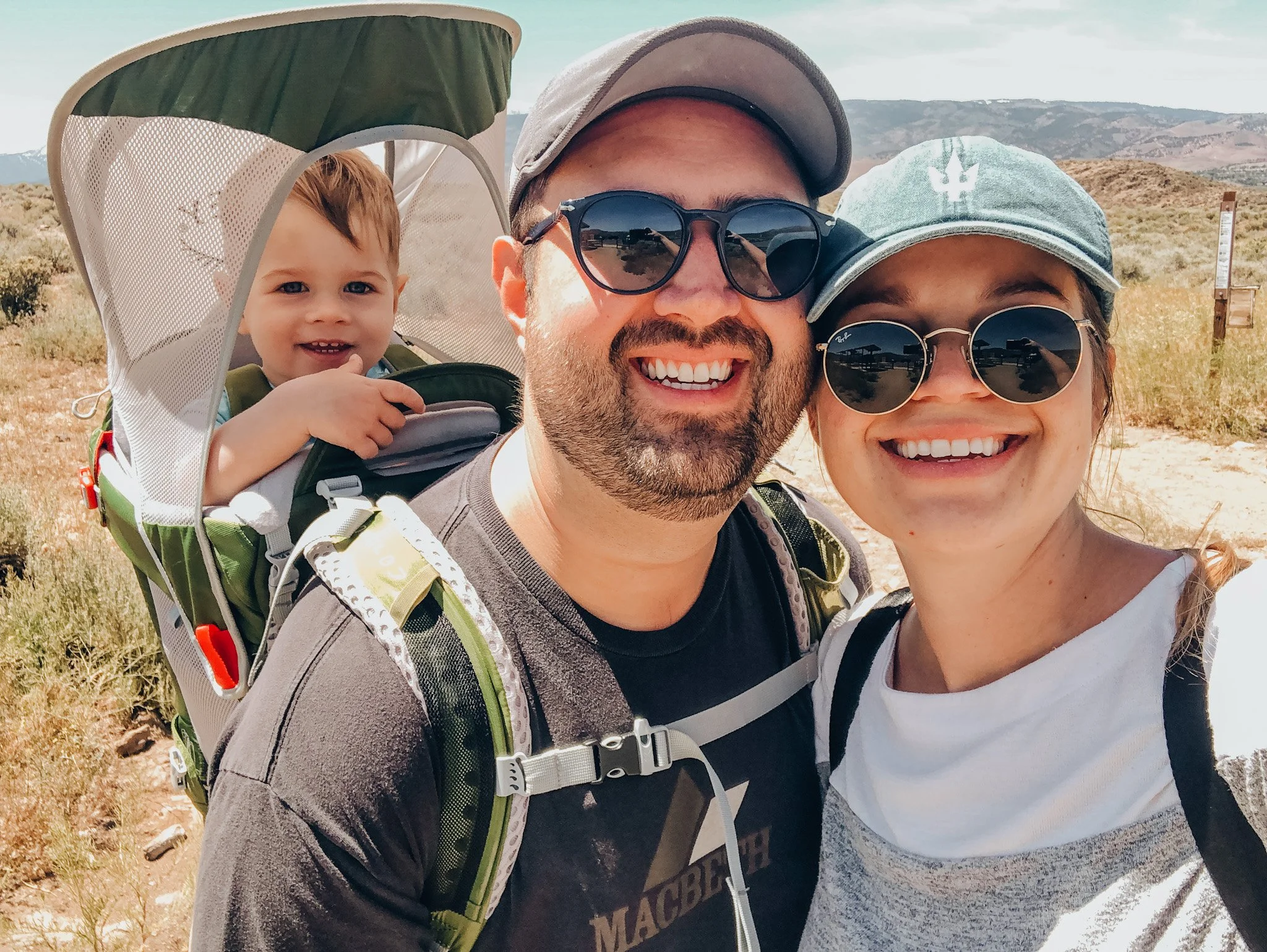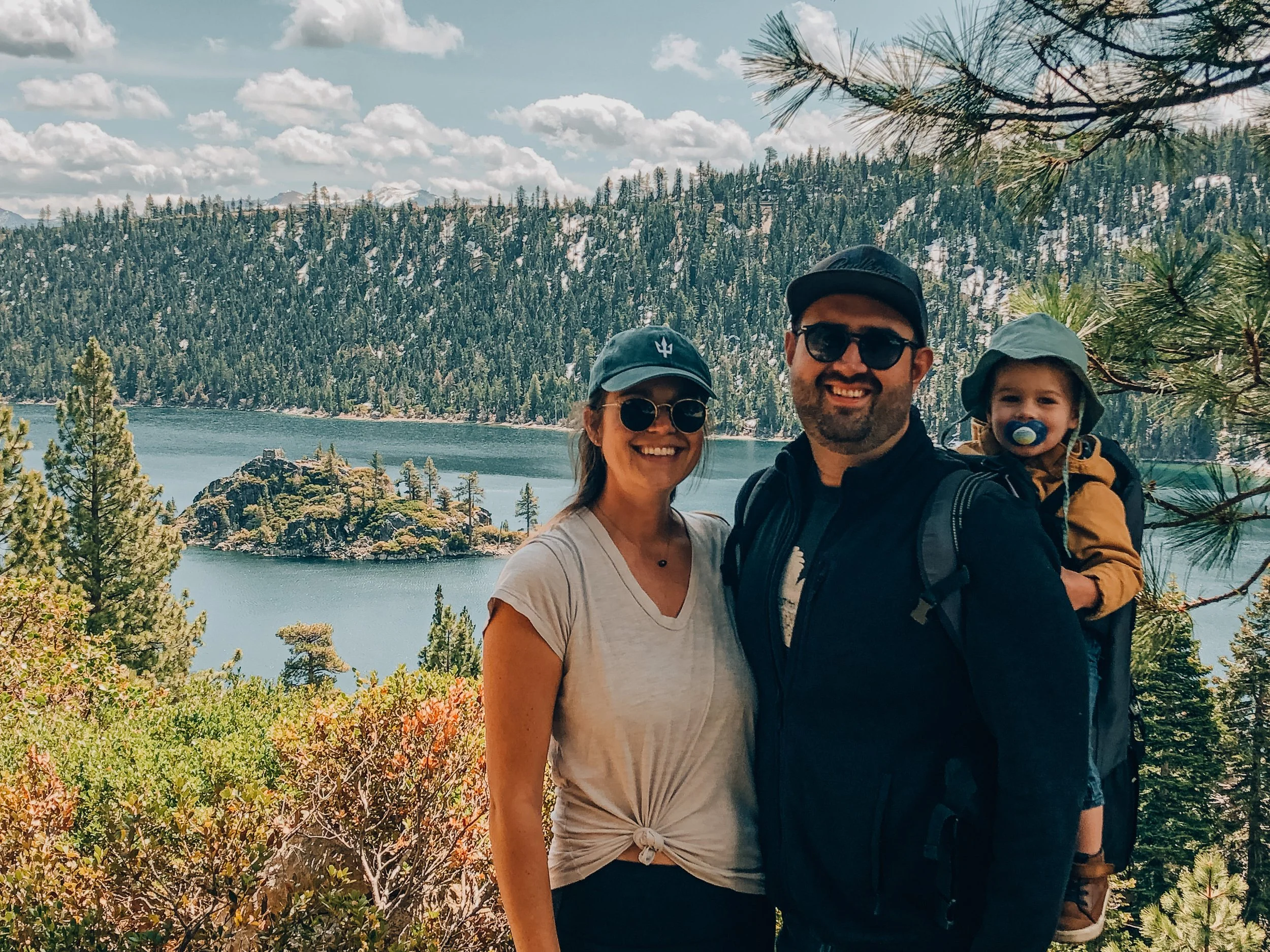Practicing Travel Skills with a Toddler
Thinking about traveling some time in the future, but not sure if you are ready? Traveling with a toddler is totally possible, and a lot of fun! You can do it and enjoy it too! In fact, you could hop on a plane today, and manage just fine. However, I do recommend putting in some skill building before your go (both for your and your toddler). Your efforts will pay off with a more enjoyable trip. The biggest hurdle is getting yourself mentally prepared and that comes with knowing you are capable of handling a variety of situations.
In the months leading up to your trip, practice some of the ideas below. Don’t be discouraged if they don’t go perfectly - remember building skills like sleeping in new environments, sitting still at dinner, and managing energy (and emotions) take practice! You will learn more and more with each attempt, and can make tweaks until you have found what works best for your family. Then you can take on travel with confidence, knowing that you and your toddler are well rehearsed in these travel situations!
Practice sleep on-the-go.
We all do better when we are well-rested. That is why our family prioritizes sleep on vacation. The more practice your little one has at putting themself to sleep at home, the better equipped they will be on the go. And the more practice you have in creating that ideal sleep environment for your little one, the more confident you will be putting them down on your travels.
We won’t pretend to be an expert in baby sleep, but can tell you who is - Cara from @takingcarababies. We took the “Taking Cara Babies” Newborn course when our son was about one month old. Cara laid out a reliable routine to follow for wake windows and taught me how to handle naps, bedtime, and wakings.
At about 5 months, our son was sleeping 8+ hours through the night, and at 8 months, he was sleeping 11+ hours. He is still a great sleeper at almost 2 years old, though we deal with regressions like everyone else. However, when we travel, we lower our expectations and keep our cool if he happens to wake in the middle of the night or have difficulty going down.
Once you have a reliable sleeper, change up the environment on occasion, so your toddler learns to sleep in a variety of settings. Start with naps, then try overnight as you get bolder! In all cases, ensure the sleep environment is safe! It is important to allow your toddler some time to explore the environment before bedtime. It is unlikely they will be able to fall asleep without looking at or touching nearly everything first!
Here are several settings to consider:
In all cases, ensure the environment is safe for sleeping. Supervision is necessary when potential dangers are present.
Car seat (perhaps on a long drive)
Travel crib in another room at your house
Travel crib at someone else’s house
Travel crib with a blackout cover
Your lap
The couch (supervised)
Hiking backpack
Tent (at home)
Tent (outside your home)
At the beach (use shade)
On a lounge chair (use shade)
If your toddler is like mine, they like to snack all day, and meal times are hit or miss! I find this especially true when we eat out or in a new environment. He is distracted by the noise, smell, and visual input all around.
The only way to prepare for eating on the go is to do it regularly. Go on picnics, eat at restaurants, fast food places, other people’s houses, and in a different room in your own home. Try out different high chairs, booster seats, travel high chairs, and sitting on your lap at meal time. Each experience will help you better prepare for the next one. If your toddler doesn’t eat much, aim for a less-stimulating environment for their next meal.
Here are some of our favorite tips:
Bring a bib and a toddler water cup.
If possible, make a reservation, and request a highchair or booster seat. This will cue the restaurant that you have a young child, and in many cases, they will find the best location in the restaurant for your family.
Aim to make breakfast as close to their normal routine as possible (so they start the day with a full belly).
Make the restaurant aware of any allergies so they can double-check their ingredients.
Review the menu beforehand so that you can order quickly upon arrival. If you prefer, ask that your child’s meal be delivered as soon as possible, or at least some milk and bread in the meantime.
Pack a favorite snack in case your child refuses their meal.
Bring a toy or activity to play with while waiting for your food to arrive.
Be prepared to get up and walk around with your toddler.
Teach your toddler to be respectful while others are eating (no throwing objects, screaming, or getting out of their chair).
Ask for the check early, clean up what you can, and tip well.
Remember, you child does not need to be a perfect angel. People understand that kids have their own will, and are learning how to behave appropriately. Still, be sure to practice the same manners you expect of them at home, so they understand that the rules apply in all dining scenarios. If you feel too uncomfortable at the restaurant, take a walk with your little one and ask someone to text you when the food has arrived or it is time to eat. Otherwise, get your food to-go and try again when conditions are better. We have employed these work arounds many times - you are not alone!
Practice eating out.
Practice outings.
Get out of the house every day for one week. See how your little one does, and start to recognize when they have had too much! Learning your limits - both your own and your toddlers - will serve you well when traveling. Discover what environments are suitable for a short time and which environments can hold your toddler’s attention for a long time without overwhelming them. Practice keeping a routine, but a flexible schedule without being tied too tightly to the clock.
Try these outings:
Playground with many other kids
Playground with a few other kids
Farm or petting zoo
Pond or creek
Grassy field
Hike (choose one that you could carry your toddler the entire way if needed)
Indoor amusement (like a children’s museum, library, or play place)
Outdoor entertainment (like a carnival, water park, or fair)
Sitting on a picnic blanket with a toy or a book
Splash pad
Grocery shopping
Waiting in line
I have found it extremely important to tell my toddler where we are going and what to expect, and how to behave (see example below). This prepares him for what is next, and how to regulate his energy depending on what we are doing. In order to avoid a meltdown when it is time to leave, I suggest informing your toddler when there is 10 minutes, 5 minutes, 3 minutes, and 1 minute left (or one more “slide” left if time is still too abstract).
For example, I’ll say “We are going to the splash park! Remember to hold Mommy’s hand when we walk across the parking lot. Once we get inside, we will lay out our blanket and Mommy will change you into your swim trunks, and help you put on sunblock. Then, you can run around with the other kids! Remember to keep your hands to yourself - no hitting or biting. If you feel you want to bite, come ask Mommy for a snack. I have your water too, so drink as much as you need! We will be there for one hour and then it will be time to go. I’ll tell you when we have 10 minutes left. Do you want to go on the slide or stand under the bucket first?”
Feeling like you are ready to pack your bags and go? Awesome! I love to hear it! Check out our post, “Preparing to Travel with a Toddler”!
We love learning from our community! Anything to add to this post? Share in the comments!



























